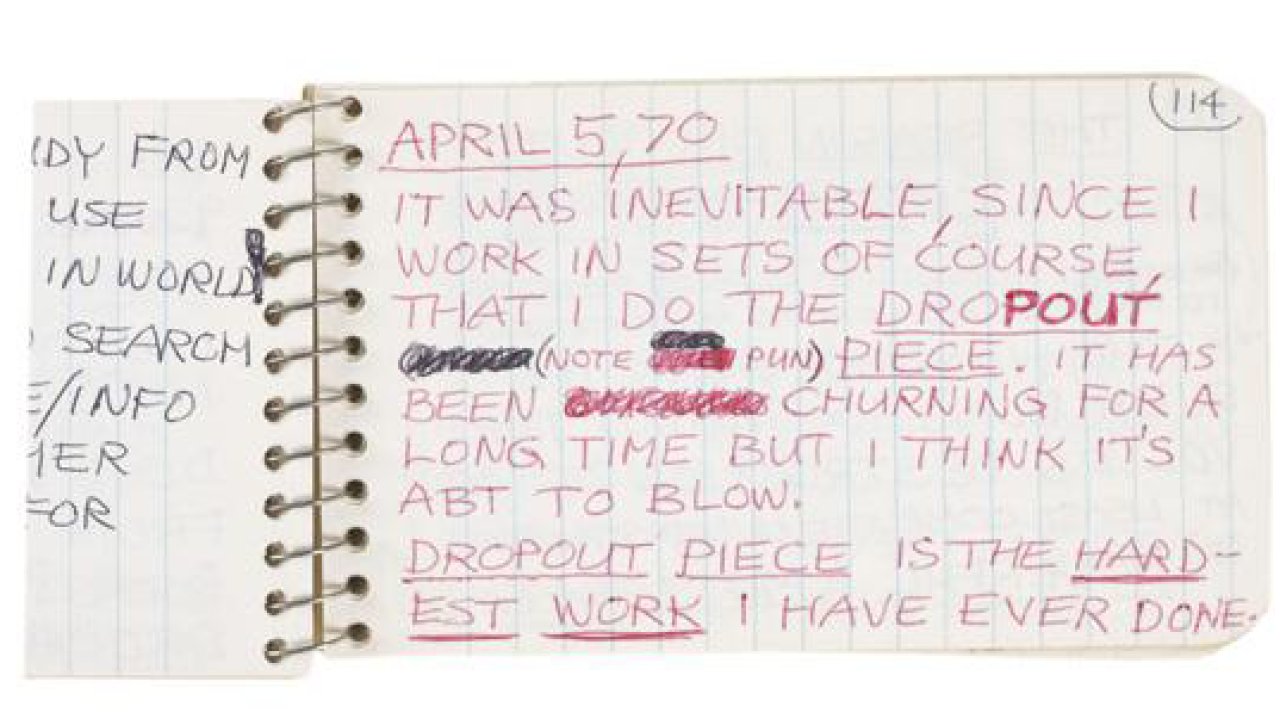Two Things Are Certain: Poetry and Taxes

Dear Friend,
Do you know what I would be doing today were it not for the C word?
Frantically finishing my taxes. And once upon a time, that would include scrounging up every last cent to my name in order to pay my obligations as a freelance writer. So today, I’m considering it a tiny win that I’m not currently finishing my taxes, but *plot twist* —> I’m frantically finishing federal loan applications instead. Woof. If you’re in the same boat, I’m sending you virtual shots of victory or defeat. What’s the difference anymore right? *sigh*
So I’ve been thinking a lot about what Art will look like when Money comes to an end.
And that has led me to think about the artist Lee Lozano.
“Blow yr nose to breathe clearly and freely. Blow yr mind to think clearly and freely.” —Lee Lozano
Lee Lozano (b. November 1930, d. October 1999), was a painter and conceptual artist (also, an extreme tripper and pothead) who famously performed what has been argued, the world’s longest durational art piece: “Decide to Boycott Women.” From August 1971 till her passing in 1999, Lozano refused to interact with women and then eventually, the arts establishment (e.g. galleries, representatives) as a statement about patriarchy and capitalism in the art world. Basically she was forty years ahead of our current socially isolated reality.
The following is an excerpt from art critic Helen Molesworth’s essay on Lozano.
“I think part of what is shocking about Lozano’s withdrawal is the rigor with which she rejected two intimately connected systems: patriarchy and capitalism. By refusing to speak to women she exposed the systemic and ruthless division of the world into the categories of men and women. By refusing to speak to women she acknowledged the impossibility of a life lived outside of the societal confines and projections of gender. By refusing to speak to women as an artwork she also refused the demand of capitalism for the constant production of private property. That she elides the fetishized art object and women was no mistake, as both share a similar fate. The strategy of rejection is a powerful one, perhaps more so today than ever before, as the logic of late-capitalist culture is almost exclusively affirmative. To reject the space of culture, and to reject it in a gendered fashion is to demonstrate that the systems are linked, interdependent, and mutually beneficial…(Relatedly, Virginia Woolf) argues that in order to solve the dual problem of war and women’s inequality, one has to identify the interconnected and mutually beneficial systems of patriarchy and capitalism and then to reject their self-imposed terms of engagement. Lee Lozano did just that, and in keeping with current conditions of critical public discourse under late capitalism, her refusal to play by the rules feels simultaneously utterly pathological and consummately idealistic. [Helen Molesworth “Tune In, Turn On, Drop Out: The Rejection of Lee Lozano” (2002)]
“Utterly pathological and consummately idealistic” is really ringing a bell for me. And here’s where I take a SHARP left turn: utterly pathological and consummately idealistic is poetry and poets. And guess what April is? National Poetry Month, y’all! See it all comes together. Because what’s the opposite of taxes? Poetry.
So blow your nose,
And blow your mind,
And meet us here at AAI!
We’re going to showcase poetry
From AAPI folks around the country.
We are celebrating National Poetry Month, indefinitely, with a series of short profiles on our favorite poets and lyricists in the AAI orbit, including: Cathy Park Hong, Yanyi, Aldrin Valdez, Cynthia Dewi Oka, Shizu Homma, Raena Shirali to name just a few! Find out what they’re eating, watching, reading, and get inspired. Stay tuned for “I want to know a poet” at our b-l-o-g.
Anne
p.s. I don’t need to blow your mind if I get you to roll your eyes. I regret no part of my juvenile attempt at verse!